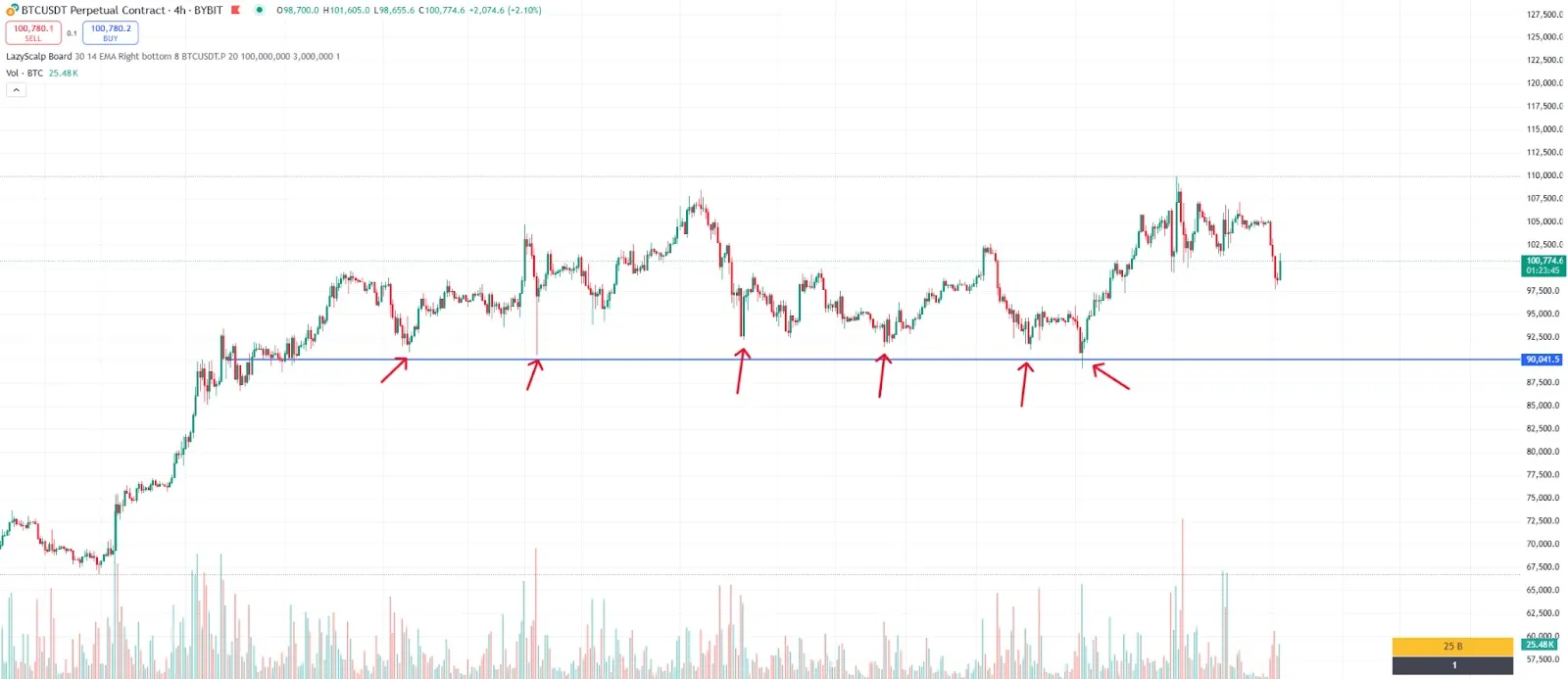
TOP best strategies for crypto trading
The crypto market is one of the most volatile and unpredictable. To make money here, it is not enough to just buy a coin and wait. You need to clearly understand how to act in different market situations. This is what crypto trading strategies are for. In this article, we will consider both classic approaches and more modern author’s methods, including automated solutions, such as trading bots Veles.
Strategies for Beginners
Beginning traders often get lost in the variety of tools and signals. Therefore, it is important to start with simple and understandable crypto trading strategies that will help you learn how to work with risks, make predictions and not act emotionally. For beginners, it is better to avoid trading too often and use strategies where you do not need to constantly monitor the chart. This will allow you to focus on learning, studying the analysis and psychology of the market.
Here are the most suitable strategies for beginners:
- HODL (or hold)
- Scalping
- Day trading
- Swing trading
- Trading on levels
- Author’s strategies by Veles
HODL strategy

One of the oldest and most proven tactics is the HODL (long term asset holding) strategy. The essence of HODL is the long-term holding of cryptocurrency regardless of short-term market fluctuations. This approach is especially relevant for those who believe in the future of the blockchain and prefer not to engage in active speculation.
Unlike scalping, day trading or other aggressive methods, the HODL strategy does not require constant analysis of charts, signals and news. This makes it ideal for investors who don’t want to or can’t spend a lot of time monitoring the market. All that is needed is to choose fundamentally strong assets such as bitcoin, ether, TON and others, buy them and hold them until the desired price level occurs. This approach pays off in times of general market growth, especially after halving, ETF launches or phases of mass cryptocurrency adoption. This strategy is often used as the basis of a portfolio even by professionals. For example, a trader can allocate 60-70% of funds to HODL, and use the rest of the capital in active trading on levels or indicators. In this way, a balance between risk and stability is achieved.
From a technical point of view, HODL is a crypto trading strategy in which there is no loss lock-in moment. This can be both a plus (you don’t go negative on drawdowns) and a minus (if the asset depreciates). That’s why it’s important to choose the right assets. Many include HODL in best tradingview strategies for cryptocurrencies to visualize long-term goals, accumulation zones, and profit taking levels.
In the age of automation, even a HODL strategy can be augmented with technology. For example, the Veles trading bot can automatically average out entries, lock in profits when target levels are reached, or react to critical news to reduce risk. In this way, even a passive approach becomes more flexible.
Scalping Strategy
Scalping is a strategy for those who want to make money on the smallest price movements. The trader opens and closes positions within minutes, sometimes even seconds. It is a high-frequency trade that requires experience and discipline. Crypto trading strategies based on scalping often use Bybit trading bots and other automated tools, because a person is simply not able to react quickly manually to most market movements.
Read more about all the risks and subtleties of implementing this strategy in our blog - Scalping in Cryptocurrency.
Day trading
Day trading is an active form of trading in which a trader opens and closes positions during one trading day without leaving them overnight. This strategy is especially popular in the cryptocurrency market due to its high volatility and round-the-clock activity. Unlike HODL or swing trading, day trading requires constant attention, quick reactions and the ability to analyze charts in real time.
Day trading is based on capitalizing on short-term market fluctuations. Traders open deals based on technical analysis, indicator signals and market news. As a rule, they additionally use tools such as RSI, MACD, moving averages, volumes and candlestick patterns. They are especially effective when trading on liquid coins - bitcoin, ether, Solana and other top assets.
Crypto trading strategies for day trading are built around the ideas of impulsive movement. Traders look for strong support and resistance levels, the breakdown of which can provoke a powerful movement. Strategies based on pullbacks and false breakdowns are also popular. All this makes day trading more dynamic, but also more risky than long-term investing.
The cryptocurrency market is open 24/7, so the trader himself determines the working hours. Many people choose the time of high activity - the intersection of the European and American sessions. At this time, liquidity is maximum and there are more opportunities to earn money. However, constant observation of the market can lead to overwork, emotional mistakes and, as a result, losses. Therefore, crypto trading strategies necessarily include risk management: a clear stop-loss, limiting losses for the day, observing the position size and eventually the use of trading automation.
Swing trading

Swing trading is a medium-term crypto trading strategy focused on capitalizing on price fluctuations within a stable trend. Unlike day trading, where trades are closed within one day, swing traders hold positions for several days to a couple weeks, depending on market conditions. This approach requires less time to monitor charts, but still allows you to capture a significant portion of the price movement.
The basic idea of swing trading is to “catch the wave” - that is, to open a trade at the beginning of a local movement (swing) and exit at its top or bottom. This allows you to make money both on the rise and fall of the market, especially if you use margin trading or derivatives. Swing trading is especially effective on cryptocurrencies, where sharp impulses followed by pullbacks are not uncommon. A skillful swing trader uses such movements to his advantage by analyzing volumes, candlestick patterns and price dynamics. Strategies may include combinations of indicators such as RSI, MACD, Bollinger Bands and moving averages - anything that helps to determine if the market is overbought or oversold.
Unlike HODL, where a position can be held for years, and scalping, which requires quick reactions, swing trading is in the golden mean. It allows flexible capital management, the use of trading bots for automatic entry and exit of trades, and at the same time does not require constant presence at the computer.
A separate advantage of swing trading is that it allows you to maintain emotional balance. A trader does not react to every candle or short movement, as in intraday trading. Instead, he acts according to a pre-planned scenario, analyzing the market once or twice a day. This reduces the probability of impulsive decisions and increases trading stability.
Trading by levels

One of the most reliable and logical techniques is trading by levels. Here, the trader identifies strong support and resistance zones from which the price pushes off. This is the basis of technical analysis. This approach is used in many crypto trading strategies, including automated ones. Levels work well in combination with patterns (for example, “double top”, “flag”, “triangle”) and are confirmed by volumes. It can be said that this strategy is part of the many strategies listed earlier.
Indicator strategies in cryptocurrency
One of the most popular and effective approaches in modern crypto trading is the use of indicator strategies. In conditions of high activity and continuous operation of the market, it is the indicators that help traders make informed decisions, minimize risks and find the optimal entry and exit points.
The essence of indicator strategies is that the trader uses technical indicators - algorithms that analyze historical data on price and volumes, forming signals to buy or sell. Among the most popular ones are RSI (Relative Strength Index), MACD, moving averages (MA, EMA), Bollinger Bands, Stochastic Oscillator, volume indicators (OBV) and others. Each of them has its own peculiarities and is used depending on the market situation and trading style.
Crypto trading indicator strategies are divided into trending, counter-trending and flat. Trend strategies work in conditions of steady movement - up or down, while counter-trend strategies are aimed at catching reversals, and flat strategies are aimed at trading in a narrow range. Choosing the right strategy for the current market is only half of success. The mistake of many beginners is blindly following the signals of indicators without taking into account the market context. That is why it is important not just to use indicators, but to understand their logic and to understand a little bit about market analysis. It is also important to take into account that indicators are lagging tools. They are based on the events that have already happened, so there is always a risk of a false signal. To minimize this risk, indicator strategies in cryptocurrency often use filtering: for example, entering a trade only after confirming the signal with volume, or when two or more indicators coincide.
Author Veles’ strategies
In a world where crypto trading strategies often repeat each other and are based on common templates, Veles platform managed to stand out due to its unique approach. Inspired by the spirit of research and innovation, the Veles team launched a series of author’s trading strategies, combining them into a conceptual cycle called “The Age of Discoverers”. Each strategy is named after a historical figure whose ideas changed the course of history - and each of them is aimed at solving specific tasks of a trader in the crypto market.
The first of them is Kurchatov 3.1, named after the father of the Soviet atomic project. This strategy is like controlled energy: it is designed for precise and measured trading in medium-term trend conditions. It works particularly well on pairs with stable volatility, including stablecoins and large altcoins. For a trader, it is like operating a reactor: strictly according to the plan, with full risk control and a high probability of profit.
The second strategy is Hillary, in honor of the conqueror of Mount Everest. This solution is ideal for those who prefer a breakout-oriented strategy with a strong upward movement. Hillary works on an uptrend and looks for entry points when the asset is “climbing”. The use of Hillary is especially appropriate in a bull market, where it is important to enter a growing asset in time and exit at its top.
The third strategy is Newton, designed for short positions and named in honor of Isaac Newton, because the fall of cryptocurrencies, like apples, obey the laws of force. Newton is a strategy set up to capture pullbacks, reversals and bearish moments. Therefore, it is an ideal tool in protracted corrections or collapses, where ordinary traders lose, and professionals with Newton - earn.
The peculiarity of all three strategies is automation through the Veles trading bot. The user does not need to manually follow every signal: Veles performs precise actions based on an algorithm, places orders, manages the position and closes the trade when the conditions are met. This turns trading strategies into a system free from emotion and randomness.
We have sorted out many strategies, from the simplest ones to professional automated solutions. We are sure that everyone will find the most optimal trading strategy based on their capabilities and preferences. However, remember that whatever strategy you choose, you will always be responsible for the result. Therefore, try, experiment, adapt and most importantly - do not neglect risks.
FAQ
1. What is the safest strategy in crypto trading?
The HODL strategy is considered the least risky, especially when investing in large assets such as BTC and ETH.
2. Is it possible to make money using a trading bot?
Yes, especially if you use proven solutions like the Veles trading bot, but it is important to set them up correctly for the current market.
3. How to choose the best strategy?
Start with the simple: HODL, levels and indicators. Then try swing trading, scalping and automation through bots.
4. Where to find ready-made strategies?
TradingView has thousands of templates. The best ones are those that have been tested and adapted for crypto.
5. Are levels and patterns relevant in 2025?
Yes. The classics of technical analysis still work, especially in combination with volumes and the behavior of large players.